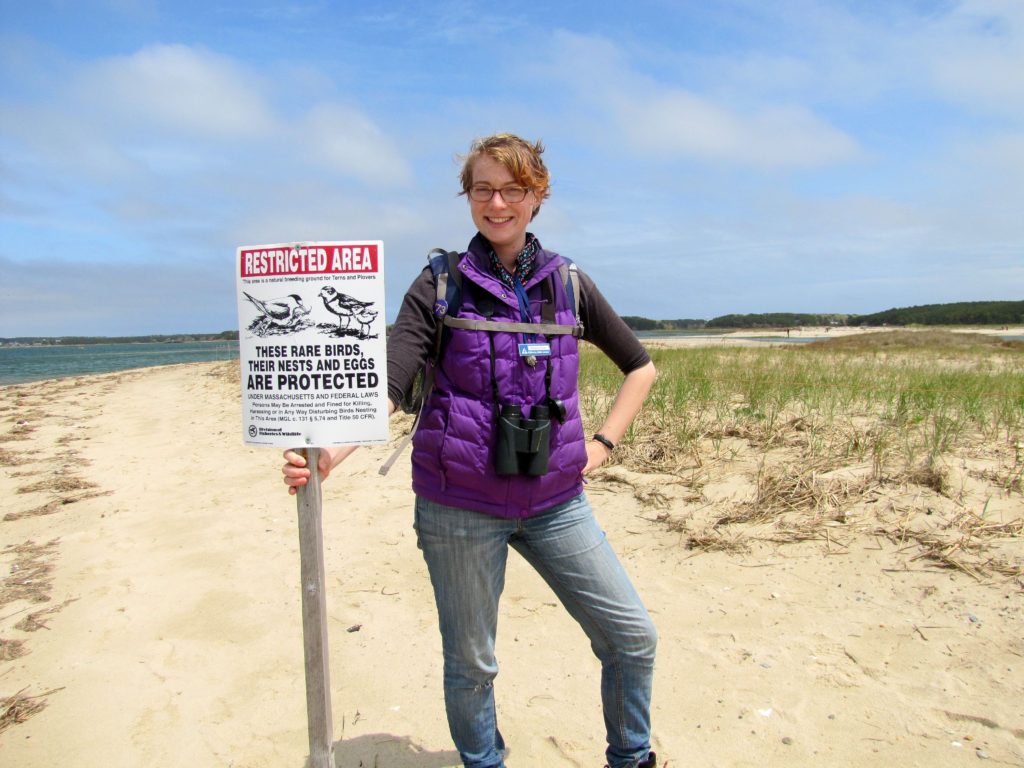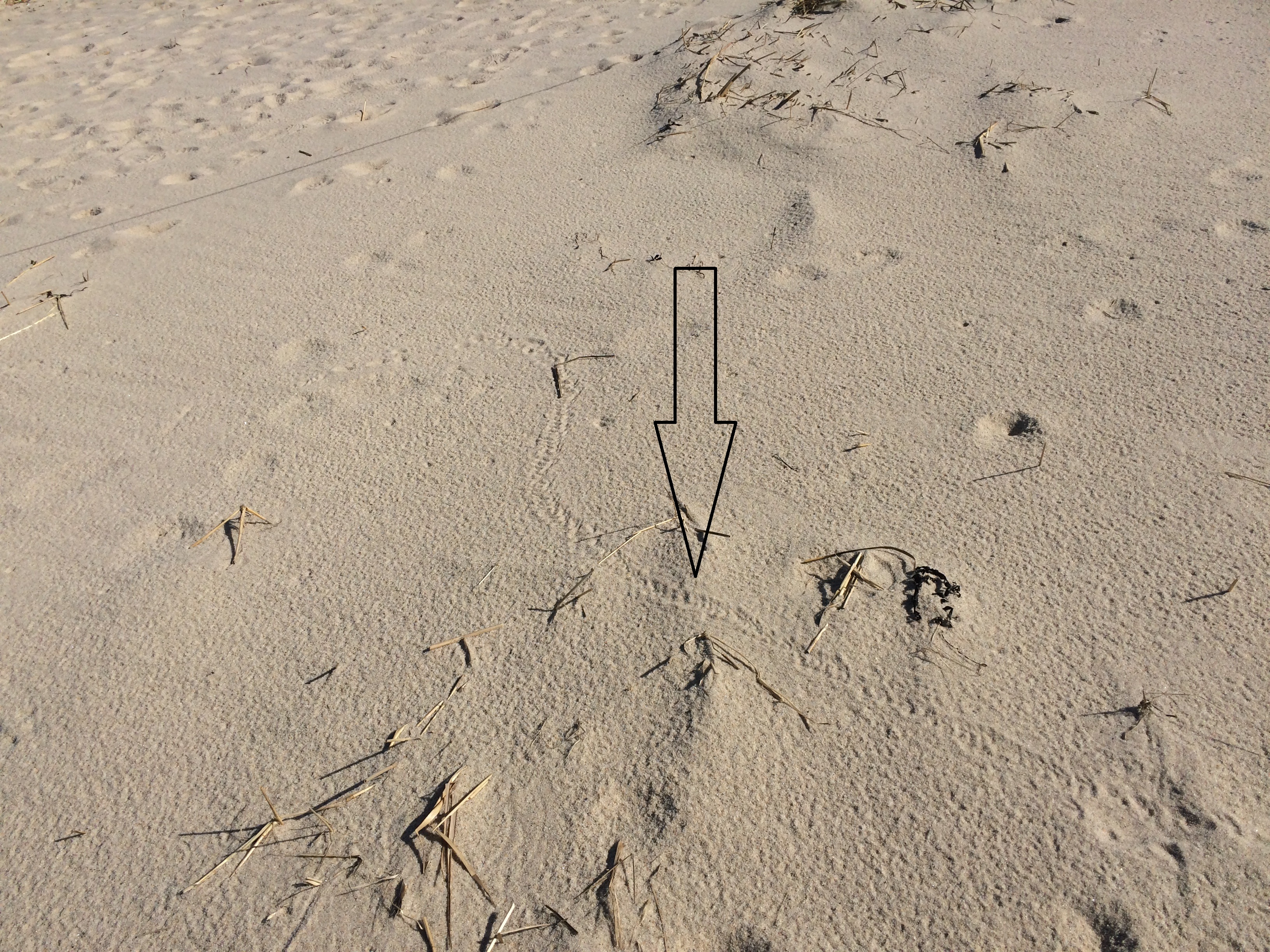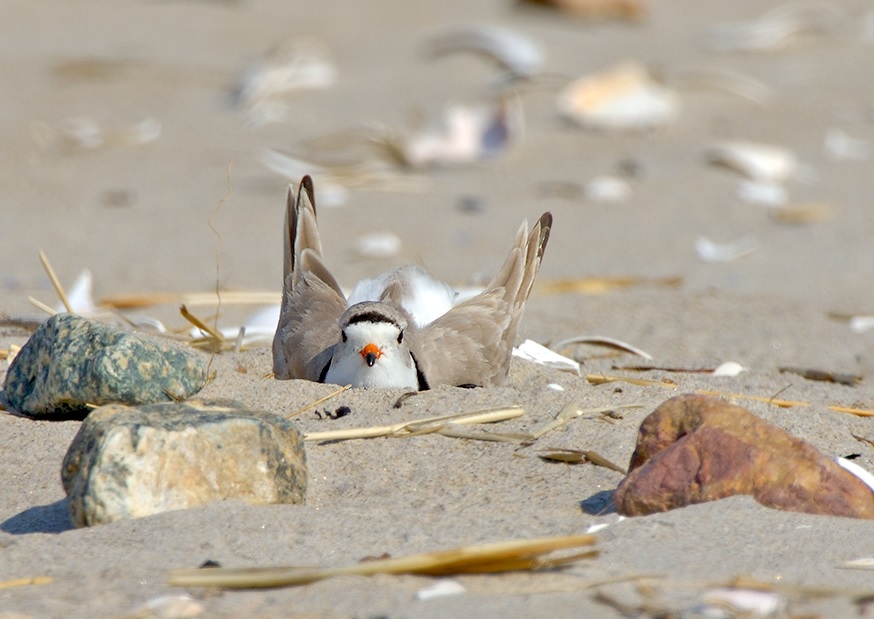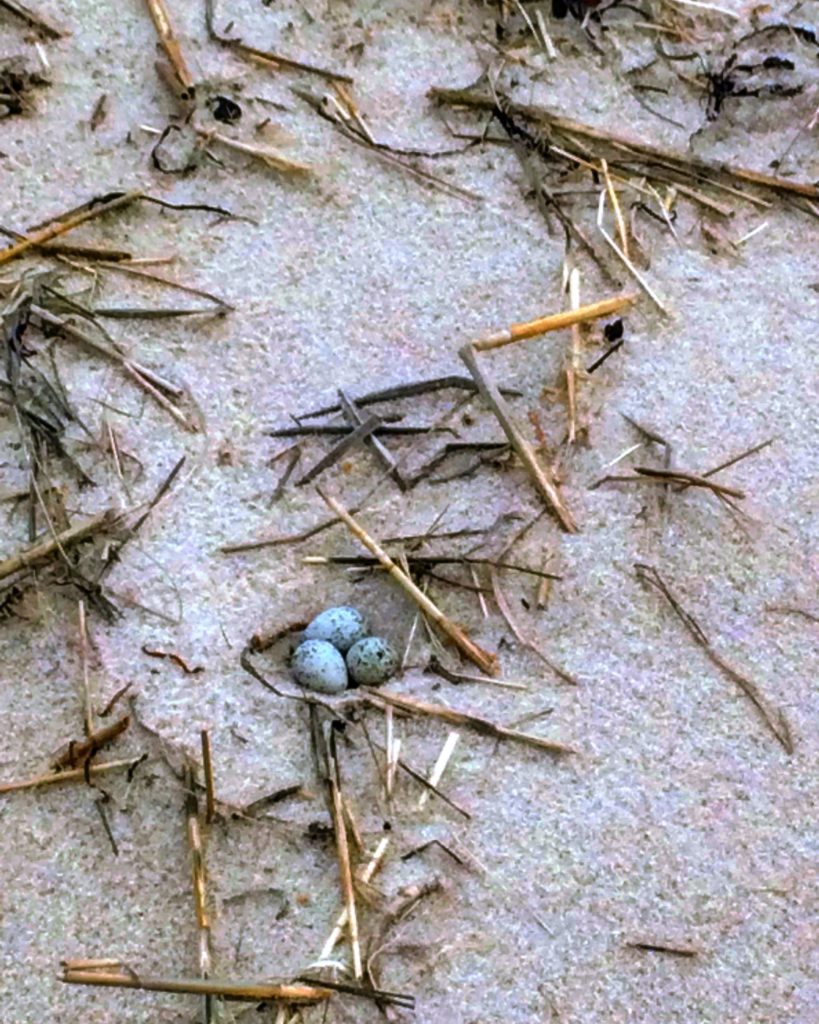
Rebecca Shoer monitors Piping Plovers until Diamondback Terrapin nesting season.
For the past few weeks, I’ve been helping monitor one of the most famous residents of Cape Cod: the Piping Plover. Normally you would find me hanging with a much slower and more reptilian crowd (diamondback terrapins and sea turtles, specifically), but as terrapin nesting starts in early June, I was recruited to help monitor plover pairs. I’ve discovered that they are an engaging and delightful species to work with.
One of my favorite plover behaviors is “high stepping,” a courtship behavior performed by males. The behavior is exactly what it sounds like: the male approaches the female, and once he’s close starts flicking his legs at amazing speed, like an over-caffeinated Rockette.

Mating on his mind (photo by Don Kennedy)
One afternoon I was lucky enough to watch a male perform this physical feat, before hopping onto the female’s back to copulate. I couldn’t help but giggle during this performance, but it certainly seemed to be appealing to the female! And the resulting courtship tracks are distinctive.

Tracks from male’s high-stepping which signals he’s ready to mate.
Male plovers engage in another behavior I find both adorable and hilarious: scraping, an essential part of plover nesting. Males create potential nests, called scrapes, throughout the nesting habitat that they’ve chosen. This is a chance for a young pair to explore real estate options, before committing and laying eggs. When a male creates a scrape, he uses his chest to form a small hollow in the sand. At the same time, he kicks sand back with his feet, and pipes out a loud repetitive call. This may be another way to impress females, and perhaps tell any neighboring males that this is his spot.

Male plover scraping (photo courtesy of Jim Fenton)
Plovers usually create multiple scrapes throughout their habitat, which in turn creates a challenge for those of us monitoring the site. We need to be sure that all of the scrapes are within our fencing; should the pair decide to commit to a scrape, it needs to be protected.
After pairs have been scraping for a few days, we monitors have to be extra-vigilant in our search for nests. Plovers typically have nests of four eggs, and once the fourth egg is laid we can actually predict the hatch date. Luckily, plovers lay eggs about every other day, which gives us time to find the clutch before it’s complete. Looking for a plover nest is like… well, looking for a well-disguised pebble on a beach!

Can you find the plover on the nest? (photo by Ben Carroll)
Having spent last summer searching for turtle nests buried safely underground, I was nervous about searching for exposed plover eggs. However, I was thrilled to recently find my first nest, one egg safely nestled in the sand. When I looked further, though, I found a second egg about two feet outside of the nest.

The nest (seen at bottom of photo) is missing an egg, which can be seen above. (Photo by Rebecca Shoer).
Turns out that the night before had seen an astronomical high tide. The nest in its current location was in serious danger; one egg already appeared to have floated out, and the next tide was predicted to be even higher. I was worried, but plovers will re-nest up to five times in a season. I hoped that this pair had learned their lesson.
Amazingly, two days later there were three eggs, all in an entirely new nest. Sometime in the past 48 hours, this plover pair had created a new scrape and moved their eggs.

New nest; all eggs accounted for (photo by Ian Kinahan).
I was delighted and, as of this post, the pair is attentively incubating a four-egg nest.
Should you happen to visit the Cape this summer, you may see the orange twine and yellow signs of protected nesting habitat. Hours of work and lots of heart goes into protecting each and every one of these nesting pairs. Plovers face a myriad of new and dangerous threats: habitat destruction, human disturbance, and a boom in predator populations. With a little luck and a lot of work, we hope that these small creatures will have a home on Cape Cod for years to come.

Pair of Plovers (photo by Carol Duffy).
Rebecca Shoer is spending her second summer monitoring Wellfleet Bay’s nesting and hatching diamondback terrapins. Not only has she been keeping tabs on plovers this spring, she was also a member of the sea turtle rescue team last fall when the sanctuary recovered more than 600 stranded turtles, its second highest year on record.

